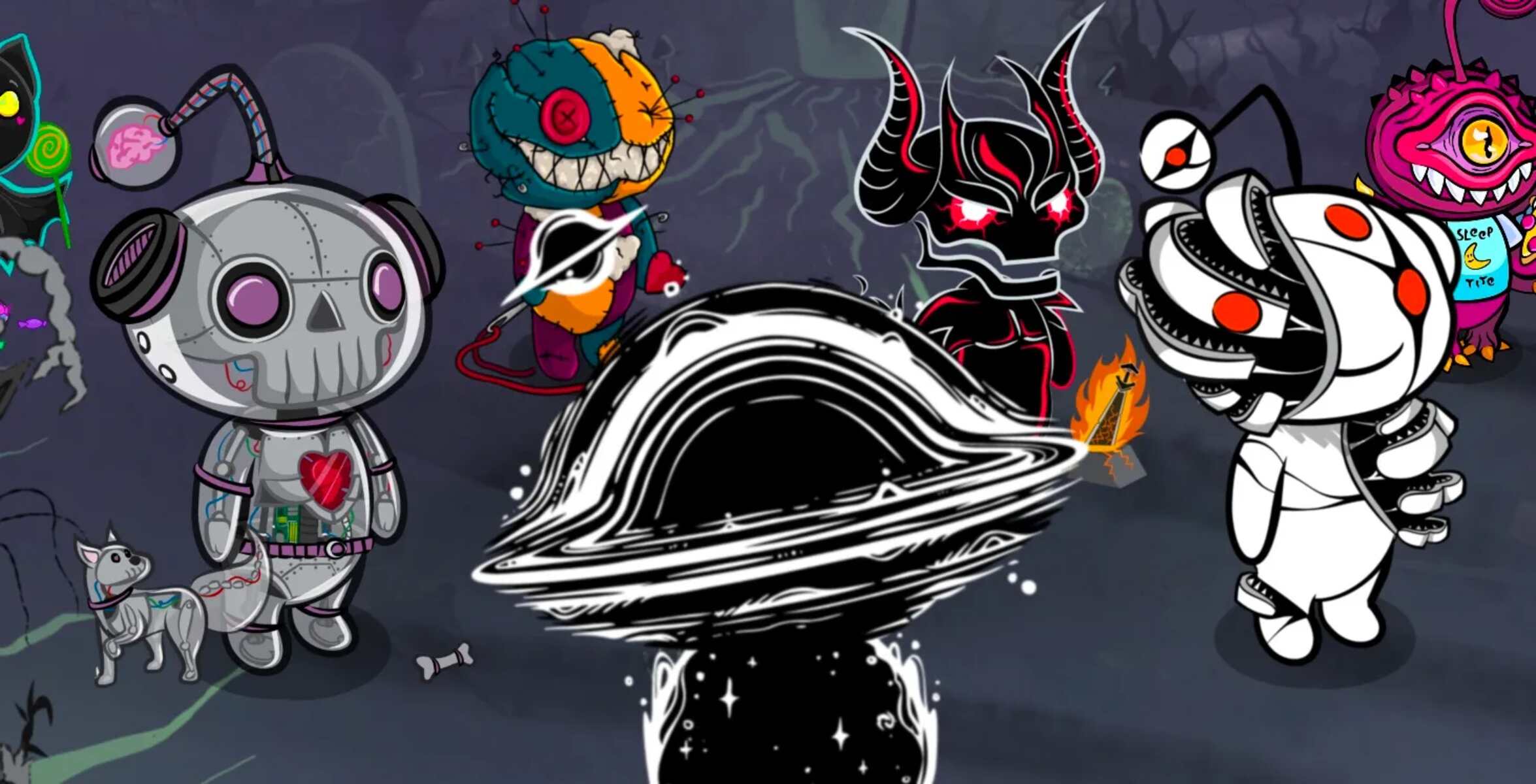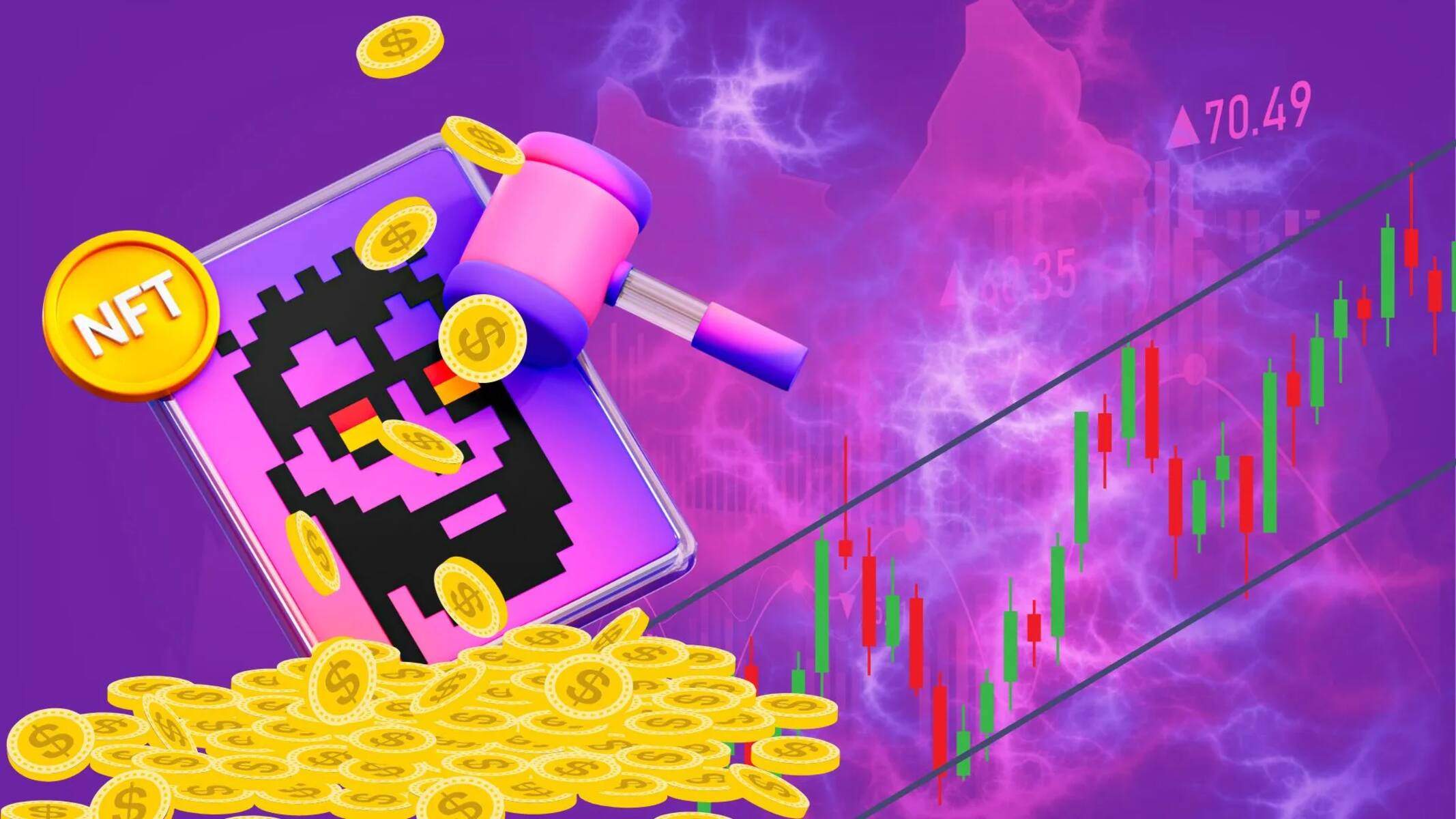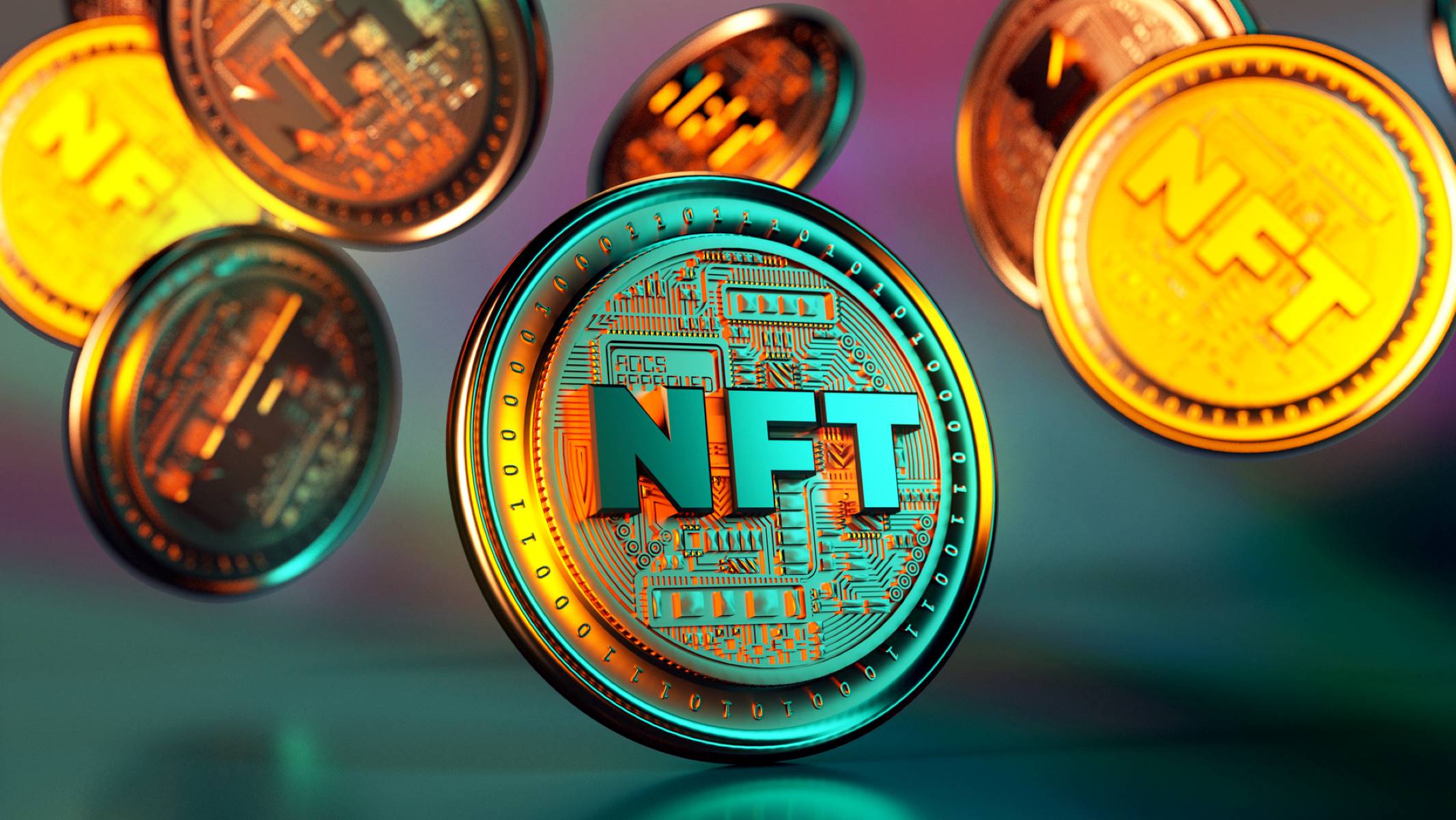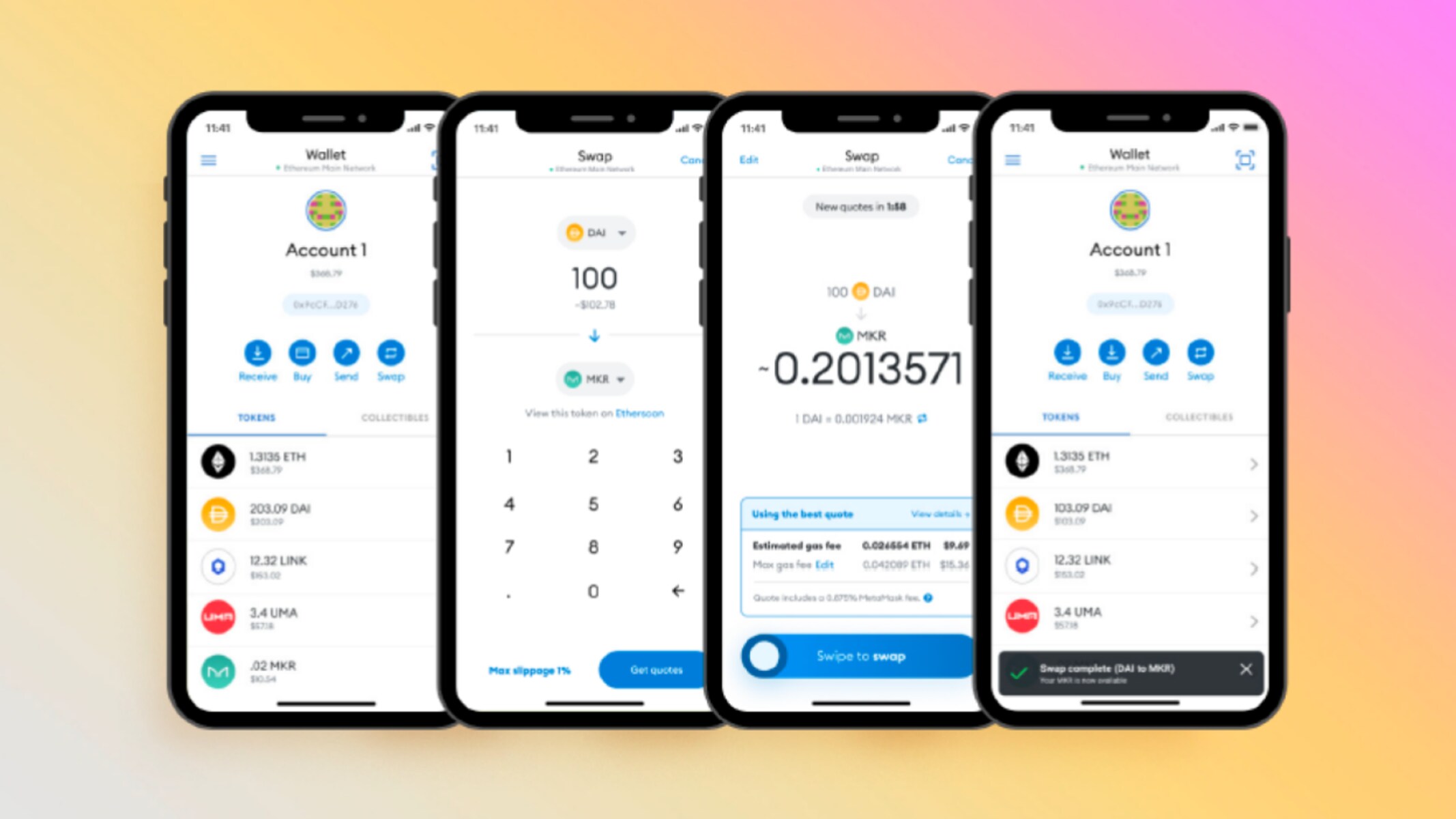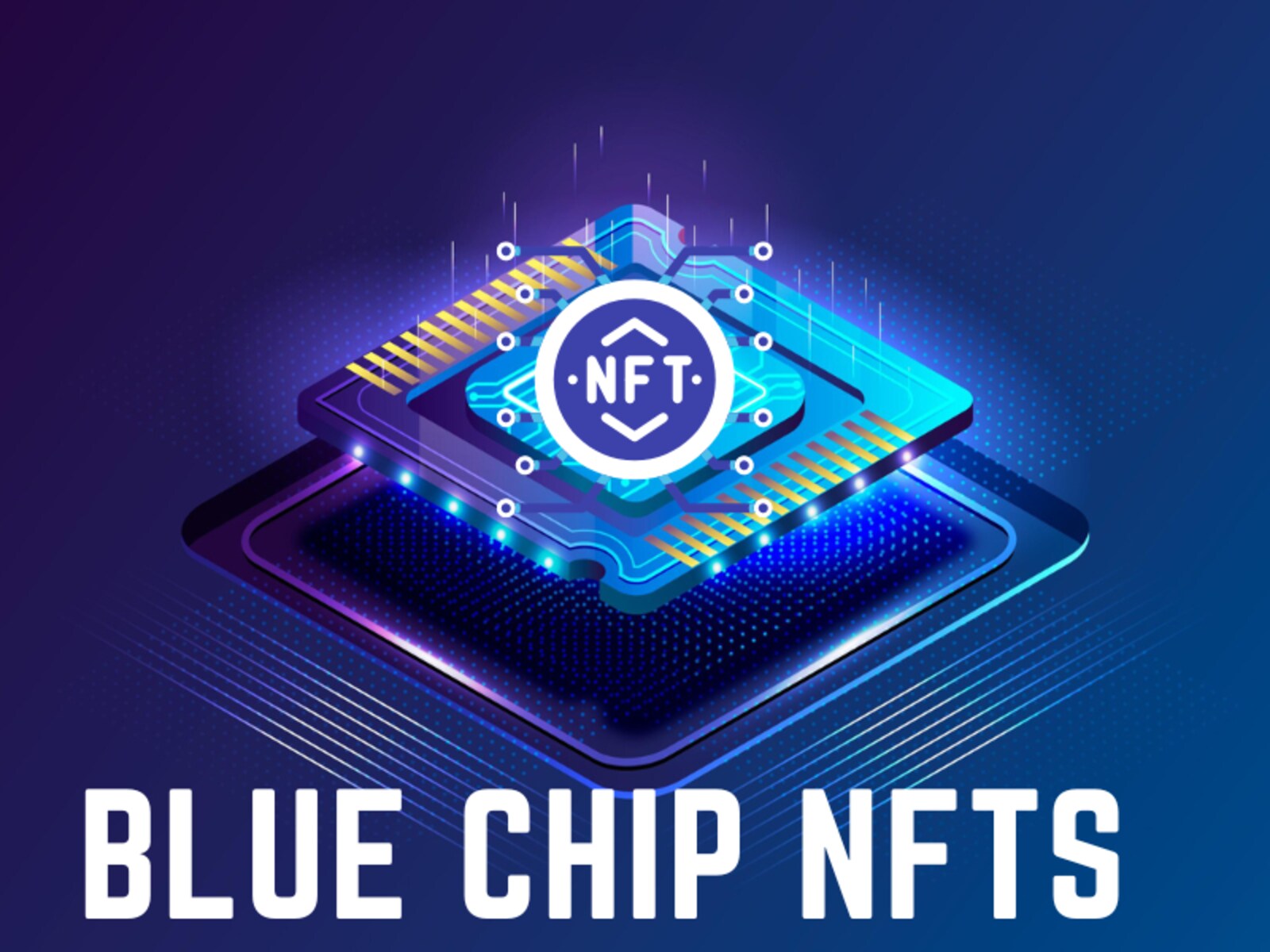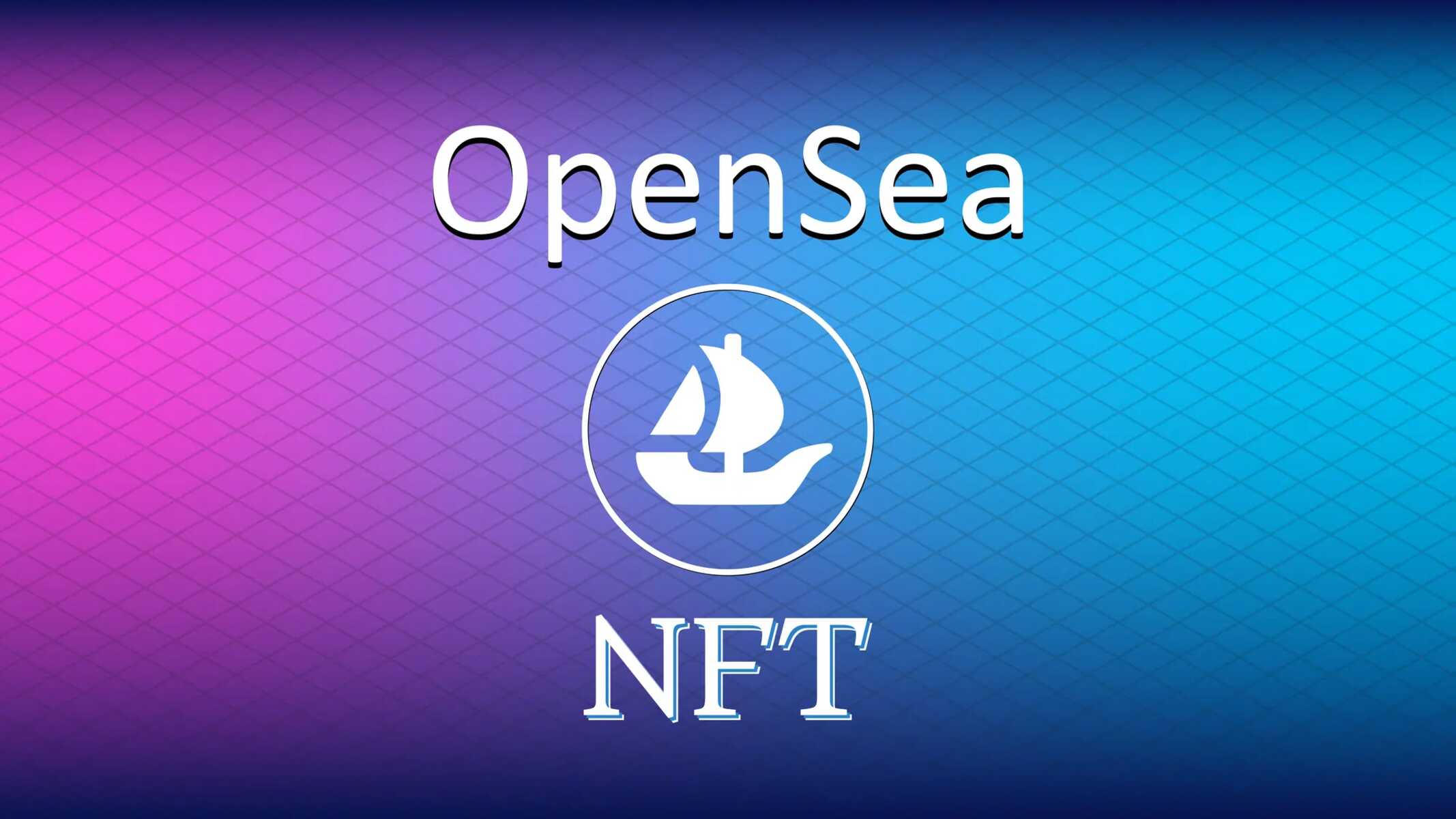Introduction
When it comes to the world of digital assets, Non-Fungible Tokens (NFTs) have been creating quite a buzz. NFTs have revolutionized the way we perceive ownership and authenticity in the digital realm. But what exactly is an NFT collection?
An NFT, or Non-Fungible Token, is a unique digital asset that is stored on a blockchain, making it immutable and verifiable. These tokens can represent various forms of digital media, including artwork, videos, music, and even virtual real estate. Unlike cryptocurrencies such as Bitcoin or Ethereum, NFTs cannot be exchanged on a like-for-like basis, as each token holds its own distinct value, provenance, and ownership. Essentially, NFTs certify the ownership and authenticity of digital assets.
So, what sets an NFT collection apart from an individual NFT? An NFT collection is a curated selection of multiple NFTs that have a common theme or purpose. Think of it as a digital art exhibition or a compilation album. While each individual NFT within a collection has its own unique traits and value, the overall collection creates a unified experience for collectors and enthusiasts.
These collections can range from limited editions of digital artwork by renowned artists to collectible virtual cards featuring sports icons. Some NFT collections also include utility tokens, granting holders access to exclusive content or experiences related to the collection. With each collection offering a unique concept or theme, collectors are drawn to these curated sets of NFTs as a way to express their taste and identity within the digital art world.
The popularity of NFT collections can be attributed to several factors. Firstly, they provide a sense of community and belonging to collectors who share a common interest in a particular theme or artist. Collectors can engage in discussions, collaborations, and even trading within the community, fostering a sense of camaraderie and excitement.
Additionally, NFT collections often come with added benefits and rewards for collectors. These can include early access to new releases, exclusive content, or even the opportunity to meet and interact with the artists themselves. By owning a piece of an NFT collection, collectors become part of a unique ecosystem that extends beyond the digital asset itself.
With the rising interest in NFTs, creating and publishing your own NFT collection has become an exciting opportunity for artists, creators, and entrepreneurs. Platforms such as Ethereum, Binance Smart Chain, and Flow offer user-friendly interfaces and tools for artists to mint, showcase, and sell their collections to a global audience.
Whether you’re a collector looking for the next exciting NFT collection to add to your portfolio or an artist searching for a new medium to showcase your creativity, exploring the world of NFT collections opens up a realm of possibilities in the digital art landscape.
Definition of NFT
To truly understand what an NFT collection is, it is important to dissect the concept of Non-Fungible Tokens (NFTs) at its core. NFTs have become a prominent buzzword in the digital world, but what exactly do they entail?
An NFT, or Non-Fungible Token, is a specific type of digital asset that represents ownership or proof of authenticity of a unique item or piece of content. Unlike cryptocurrencies such as Bitcoin or Ethereum, which are fungible and can be exchanged on a like-for-like basis, NFTs have a distinct value and cannot be replaced or replicated.
What makes an NFT unique is its association with blockchain technology. NFTs are created, stored, and verified on a decentralized blockchain network, ensuring transparency, security, and immutability. The most common blockchain platforms for NFTs are Ethereum, Binance Smart Chain, and Flow.
With NFTs, the ownership and provenance of a digital asset can be established and verified by leveraging the underlying blockchain technology. This allows for a new level of scarcity, rarity, and exclusivity in the digital realm. Consequently, NFTs have gained significant traction in the art world, enabling artists to monetize and protect their creations in ways that were previously unfeasible.
Each NFT is associated with a unique identifier, often referred to as a token ID, which distinguishes it from other tokens within the same collection or ecosystem. This identifier gives NFTs their individuality and makes them non-interchangeable.
Furthermore, NFTs can contain additional metadata that provides more information about the asset, such as the artist’s name, creation date, and description. This metadata plays a crucial role in establishing the authenticity, history, and context of the NFT, increasing its overall value.
In summary, NFTs are digital assets that utilize blockchain technology to certify ownership, authenticity, and uniqueness. Unlike cryptocurrencies, NFTs are non-fungible, meaning each token is distinct and cannot be exchanged on a one-to-one basis. The association with blockchain ensures transparency and security, while the unique metadata provides additional context and value.
Now that we have a solid understanding of NFTs, let’s delve deeper into the concept of an NFT collection and its significance in the digital art space.
What Is an NFT Collection?
An NFT collection refers to a curated selection of multiple Non-Fungible Tokens (NFTs) that share a common theme, purpose, or creator. Just like a physical art collection or a series of collectible items, an NFT collection brings together a cohesive set of digital assets under a unified concept.
These collections can take various forms, ranging from digital artworks, collectible cards, virtual worlds, music albums, or even virtual fashion items. Each NFT within the collection maintains its uniqueness and value, but together they create a broader narrative or visual experience for collectors.
Artists, creators, and even brands often release NFT collections as a way to showcase their skills, creativity, or brand identity in the cryptocurrency and digital art space. These collections can be limited editions, meaning that only a specific number of NFTs will be created and distributed, increasing their exclusivity and desirability.
One of the key features of an NFT collection is the underlying theme or concept that ties the individual NFTs together. For example, an artist may release a collection of digital artworks centered around a specific style, subject matter, or cultural reference. This cohesive theme creates a sense of unity and coherence within the collection.
NFT collections can also offer additional utility or benefits to collectors. Some collections include utility tokens or access passes that give holders exclusive privileges, such as VIP status in virtual worlds, membership in exclusive communities, or early access to future releases. These added incentives enhance the appeal and value of collecting NFTs within a specific collection.
Furthermore, the concept of an NFT collection extends beyond the individual NFTs themselves. Collectors who acquire multiple NFTs from the same collection can create a portfolio or digital art gallery that represents their taste and passion. Just like traditional art collections, digital art collectors take pride in curating and displaying their NFT collections as a reflection of their identity and interests.
The rise in popularity of NFT collections can be attributed to the unique combination of blockchain technology and artistic expression. NFT collections enable artists and creators to showcase their work to a global audience, establish a loyal community of collectors, and monetize their creations in innovative ways.
Now that we have explored the concept of an NFT collection, let’s delve into the reasons behind the increasing popularity of these collections in the digital art world.
Why Are NFT Collections Popular?
The popularity of NFT collections has witnessed a rapid surge in recent times. There are several factors contributing to the growing interest and appeal of these curated sets of Non-Fungible Tokens (NFTs) within the digital art world and beyond.
Firstly, NFT collections offer a sense of community and belonging. Collectors who share a common interest in a particular theme or artist can connect, engage in discussions, and collaborate within a dedicated community. This creates a vibrant and lively atmosphere where like-minded individuals can come together to appreciate and support the NFT collection.
Additionally, NFT collections often provide collectors with exclusive benefits and rewards. These can include early access to new releases, special editions, or bonus content related to the collection. These extra perks not only incentivize existing collectors to continue supporting the collection but also attract new collectors who are enticed by the added value.
Another reason for the popularity of NFT collections lies in the scarcity and rarity they offer. Limited editions of NFT collections ensure that only a specific number of NFTs are available to acquire, making them highly sought after by collectors. This creates a sense of exclusivity and uniqueness, driving up the desirability and value of the NFTs within the collection.
NFT collections also provide an opportunity for artists, creators, and brands to showcase their work or brand identity in a unique and innovative way. By releasing a collection of NFTs, they can tell a visual story, express their creativity, and captivate their audience. This not only elevates their profile within the digital art space but also opens up new avenues for monetization and engagement.
The intersection of technology and art is another factor driving the popularity of NFT collections. The integration of blockchain technology ensures transparency, security, and authenticity in the ownership and transactions of NFTs. This innovative approach to art ownership resonates with collectors who are intrigued and fascinated by the potential of digital assets and decentralization.
Furthermore, the rise of NFT collections has attracted mainstream attention, with celebrities, musicians, and influential figures venturing into the world of digital art. This newfound visibility and endorsement have helped legitimize NFT collections and increase their appeal to a wider audience.
Lastly, the potential for financial gains in the NFT market has also contributed to the popularity of NFT collections. With some NFTs fetching staggering prices in auctions and secondary markets, collectors are drawn to the investment opportunities that NFT collections represent. This combination of passion for art, community engagement, and potential financial returns has made NFT collections a highly sought-after asset class.
With their ability to cultivate communities, offer exclusive benefits, showcase creativity, embrace technology, and provide investment opportunities, it’s no wonder NFT collections have captured the attention and imagination of collectors and enthusiasts around the world.
Advantages of NFT Collections
NFT collections, comprised of curated sets of Non-Fungible Tokens (NFTs), offer several distinct advantages for both creators and collectors in the digital art space. These advantages have contributed to the increasing popularity and adoption of NFT collections as a unique form of artistic expression and investment.
One of the primary advantages of NFT collections is the ability to showcase and monetize creativity. Artists and creators can leverage NFT collections to present their work in a cohesive and curated manner, capturing the attention of collectors and enthusiasts. By releasing a themed collection, artists can tap into a specific niche or aesthetic, attracting a targeted audience and amplifying their reach.
NFT collections also provide an opportunity for artists to establish a loyal community of collectors. Through engagement, collaborations, and interactions within the community, artists can foster a sense of belonging and build a dedicated fan base. This community aspect not only supports the artist’s work but also enhances the overall value and visibility of the NFT collection.
Collectors, on the other hand, benefit from the exclusivity and rarity offered by NFT collections. Limited editions and unique traits within a collection make the NFTs highly coveted, increasing their desirability and potential value. Collectors can take pride in owning rare pieces of digital art or collectibles and enjoy the social prestige associated with acquiring NFTs from prominent collections.
The inherent transparency and traceability of blockchain technology further enhance the advantages of NFT collections. Ownership and provenance can be easily verified, providing reassurance to collectors that the NFTs they own are authentic and unique. This immutable nature of NFTs also protects against forgery and counterfeit items, ensuring that each NFT within a collection is genuine.
NFT collections often offer additional utility or benefits for collectors. These can range from access to exclusive content, events, or experiences related to the collection. Some collections even offer holders utility tokens that can be used within virtual worlds or platforms, further enhancing the value proposition of collecting NFTs from a specific collection.
Furthermore, by participating in NFT collections, collectors become part of a larger cultural movement that is reshaping the art and creative industries. NFTs provide a bridge between traditional and digital art, offering new avenues for expression, distribution, and ownership. By supporting NFT collections, collectors contribute to the growth and development of this emerging ecosystem.
Lastly, NFT collections offer liquidity and investment opportunities. With a secondary market for NFTs, collectors have the potential to resell their NFTs at a profit if the value increases over time. This speculative aspect of NFT collections has attracted investors looking to diversify their portfolios and capitalize on the growing interest in digital assets.
In summary, NFT collections provide a platform for artists to monetize and showcase their work, while offering collectors exclusivity, authenticity, and community engagement. The unique advantages of NFT collections have propelled them into the spotlight, captivating the imagination of artists, collectors, and investors alike.
How Are NFT Collections Different from Individual NFTs?
While both NFT collections and individual NFTs exist in the realm of digital assets, they differ in several key aspects that distinguish them from each other. Understanding these differences is crucial to grasp the unique value proposition of NFT collections.
Individual NFTs represent a single, standalone digital asset. These assets can include various forms of media, such as artwork, music, or videos, and each NFT is distinct and unique. Individual NFTs can be sold, traded, and owned independently, with their own set of attributes, value, and provenance.
On the other hand, an NFT collection is a curated selection of multiple NFTs that are connected by a common theme, purpose, or creator. These collections bring together a cohesive set of NFTs under a unified concept, akin to a digital art exhibition or a collectible series.
One of the key differences lies in the overall experience and narrative provided by NFT collections. Individual NFTs can stand on their own, showcasing the talent and creativity of the artist or creator. However, an NFT collection creates a more immersive and cohesive experience for collectors. The collection as a whole is often designed to tell a story, depict a particular theme, or explore a specific artistic concept, providing a more engaging and holistic experience.
In terms of ownership, collectors of individual NFTs own a single, standalone digital asset. They have the rights to transfer, sell, or display that specific NFT. In contrast, collectors of NFT collections own multiple NFTs that are part of the collection. While each NFT within the collection retains its individuality, the ownership of the collection as a whole contributes to a unique portfolio or curated set of digital assets.
The value proposition of NFT collections is also different from that of individual NFTs. Individual NFTs derive their value from their unique attributes, rarity, and demand in the market. On the other hand, NFT collections derive value from their overall concept, theme, or significance within the digital art space. Collectors are drawn to NFT collections for the cohesive experience and the storytelling aspect, along with the desirability of owning a complete set or series of NFTs.
Additionally, NFT collections often offer additional benefits and rewards to collectors. These can include exclusive access, bonus content, or utility tokens that grant holders special privileges within virtual worlds or platforms. These added perks enhance the value proposition of collecting NFTs within a specific collection, providing collectors with unique advantages beyond owning individual NFTs.
It’s important to note that while individual NFTs can be stand-alone assets, they can also be part of a larger NFT collection. Individual NFTs within a collection contribute to the overarching theme or concept, providing diversity and richness to the overall experience. In this case, the value and significance of the individual NFTs are augmented by their connection to the larger collection.
In summary, NFT collections differ from individual NFTs in terms of the cohesive experience, ownership structure, value proposition, and additional benefits they offer. NFT collections provide collectors with a unique portfolio or curated set of digital assets that are connected by a common theme or concept, creating a more immersive and engaging experience within the digital art space.
Examples of NFT Collections
The world of NFTs is teeming with a wide range of captivating and unique collections. These collections span various themes, artistic styles, and industries, capturing the imagination of collectors and enthusiasts alike. Here are a few notable examples of NFT collections that have made significant waves:
1. CryptoPunks: Considered the pioneers of NFTs, CryptoPunks are 10,000 unique 24×24 pixel art characters that were created on the Ethereum blockchain. Each CryptoPunk has its own distinct attributes, like hairstyles, clothing, and accessories, making them highly sought after by collectors.
2. Art Blocks: Art Blocks is a curated platform that features generative and algorithmic art in the form of NFTs. Artists create unique programs that generate art pieces, resulting in one-of-a-kind or limited-edition collections. These collections offer a wide range of styles and themes, showcasing the intersection between technology and artistic expression.
3. Bored Ape Yacht Club: The Bored Ape Yacht Club is a collection of 10,000 unique hand-drawn apes with various attributes and accessories. Collectors of Bored Ape NFTs gain access to a dedicated online community and receive additional benefits, such as membership to exclusive events and opportunities.
4. World of Women: World of Women is a collection that focuses on empowering and showcasing women through digital art. Each NFT in this collection features a different female character and encapsulates various themes, from strength and courage to beauty and resilience.
5. Hashmasks: Hashmasks is a collection of 16,384 unique digital artworks where the creators are anonymous. Each Hashmask is a fusion of different characteristics, allowing collectors to own a piece of an enigmatic and visually stunning collection.
6. Avastars: Avastars are unique on-chain generative characters designed to be used as profile pictures in virtual worlds and social media. Each Avastar is composed of different traits, allowing collectors to create a personalized and distinctive digital identity.
These are just a few examples of the numerous NFT collections that have gained popularity and captivated collectors. The ever-expanding landscape of NFT collections offers a vast array of artistic styles, themes, and experiences, catering to a diverse range of interests and preferences.
As the market continues to evolve, new and exciting NFT collections will undoubtedly emerge, pushing the boundaries of creativity, technology, and artistic expression.
How to Create and Publish Your Own NFT Collection
Creating and publishing your own NFT collection has become more accessible and attainable with the rise of blockchain platforms and NFT marketplaces. Here are the general steps to follow in order to bring your vision to life:
1. Choose your concept and theme: Determine the concept and theme that will tie your NFT collection together. This could be based on a specific artistic style, subject matter, or narrative that resonates with your creativity.
2. Create your artwork or digital content: Develop the individual NFTs that will comprise your collection. Use your preferred tools, software, or artistic medium to create unique, visually captivating digital assets.
3. Prepare your metadata: Each NFT in your collection will have its own metadata, which includes details such as the title, description, and attributes of the NFT. Ensure that the metadata accurately represents your artwork and enhances the overall collection.
4. Choose a blockchain platform: Select a blockchain platform to mint and host your NFTs. Ethereum and Binance Smart Chain are popular choices, but there are other options available as well. Consider factors such as transaction fees, network scalability, and the targeted audience when making your decision.
5. Mint your NFTs: Use an NFT minting platform or smart contract to create your NFTs on the chosen blockchain. This process involves linking your artwork or digital content with the unique token ID and metadata to create a verifiable and tradable digital asset.
6. Set up an NFT marketplace account: Choose an NFT marketplace where you can list and sell your collection. Examples include OpenSea, Rarible, and SuperRare. Create an account, upload your NFTs, set the desired price or auction parameters, and provide the necessary details about your collection.
7. Promote your NFT collection: Utilize social media, online communities, and dedicated NFT forums to create buzz and promote your NFT collection. Engage with potential collectors, share previews of your artwork, and explain the concept and vision behind your collection.
8. Engage with your community: Once your NFT collection gains traction, interact with collectors and enthusiasts who show interest. Foster a sense of community by responding to inquiries, facilitating discussions, and providing updates and exclusives to your supporters.
9. Consider exclusive perks: To incentivize collectors and create added value, consider offering exclusive benefits or rewards to those who acquire and hold NFTs from your collection. This can include access to future releases, limited editions, or utility tokens.
By following these steps, you can create and publish your very own NFT collection, showcasing your artwork, creativity, and vision to a global audience of collectors and art enthusiasts.
Investing in NFT Collections
The emergence of NFTs has not only revolutionized the way we perceive digital art and ownership but also created new investment opportunities. Investing in NFT collections has become an enticing prospect for individuals looking to diversify their portfolios and participate in the growing market. Here are some key considerations for those interested in investing in NFT collections:
1. Evaluate the collection’s potential: Before investing in an NFT collection, conduct thorough research to understand the collection’s artistic merit, the reputation of the artist or creator, and the demand for similar collections in the market. Assessing the potential value appreciation and long-term viability of the collection is crucial.
2. Assess the rarity and scarcity: Rarity and scarcity are important factors to consider when evaluating an NFT collection. Limited editions or NFTs with unique attributes tend to have higher desirability and potentially higher value in the market. Analyze the supply and demand dynamics of the collection to gauge its investment potential.
3. Track market trends: Stay informed about the trends and developments in the NFT market. Monitor the sales history, price fluctuations, and overall market sentiment for similar NFT collections. This will help you identify patterns and make informed investment decisions.
4. Consider the artist or creator: The reputation and track record of the artist or creator behind the NFT collection can impact its investment potential. Established artists or creators may attract a larger audience and have a higher chance of creating valuable and collectible NFTs.
5. Diversify your investments: As with any investment strategy, diversification is key. Instead of putting all your resources into a single NFT collection, consider diversifying your investments across different collections or even multiple asset classes. This helps mitigate risk and ensures exposure to a variety of market opportunities.
6. Understand the market dynamics: NFT markets can exhibit volatility and rapid changes in prices. Familiarize yourself with the market dynamics, including the factors that influence NFT prices, trading volumes, and market trends. Stay up to date with industry news and developments to make informed investment decisions.
7. Assess the platform and marketplace: Research the platform or marketplace where the NFT collection is listed. Consider factors such as security, user experience, reputation, and transaction fees. Choose trusted and reputable platforms to ensure a safe and reliable investment experience.
8. Evaluate the community and engagement: Assess the level of community engagement and interaction surrounding the NFT collection. A strong and active community can drive demand and create a network effect, increasing the value and potential future growth of the collection.
9. Consider future opportunities: Look beyond the immediate investment potential and consider potential future opportunities that the NFT collection may offer. This includes future collaborations, partnerships, or developments that could increase the value and demand for the NFTs in the collection.
Investing in NFT collections requires careful analysis, research, and a deep understanding of the market. As with any investment, it’s important to assess your personal financial situation and risk appetite before allocating resources to NFT collections.
By following these considerations and staying informed about the evolving NFT market, you can make informed investment decisions and potentially benefit from the growth and potential of this exciting asset class.
Conclusion
The world of NFT collections has introduced a new dimension to digital art, ownership, and investment opportunities. From unique digital artworks to collectible virtual cards and beyond, NFT collections have captured the imagination of artists, collectors, and enthusiasts worldwide.
With the underlying technology of blockchain providing transparency, security, and immutability, NFT collections have not only transformed the way we perceive ownership and authenticity but also created vibrant communities and unique experiences within the digital art space.
Creators now have the ability to curate and showcase their work in a cohesive and immersive manner, connecting with audiences on a global scale. By releasing themed collections, artists express their artistic vision and build dedicated followings, fostering a sense of community and engagement around their creations.
Collectors, on the other hand, have the opportunity to acquire and own digital assets that hold both intrinsic and artistic value. By participating in NFT collections, collectors contribute to the cultural zeitgeist and become part of a larger movement that is reshaping the traditional art market.
Investors are also drawn to the potential financial gains offered by NFT collections. With careful research, analysis, and diversification, NFT collections can serve as an interesting addition to investment portfolios, capitalizing on the growing market demand for unique and valuable digital assets.
As the NFT landscape continues to evolve, it is essential to stay informed about market trends, evaluate the potential of collections, and consider the broader implications of this innovative technology. Collaboration between artists, collectors, platforms, and communities will drive the growth and development of NFT collections, opening up new possibilities for artistic expression, ownership, and investment.
Whether you are an artist, collector, or investor, exploring the world of NFT collections provides a gateway to a dynamic and vibrant digital art ecosystem. With creativity, innovation, and community at its core, NFT collections have the potential to reshape the art world and redefine the concept of ownership in the digital age.









